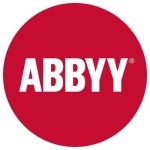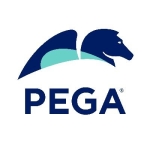Our use cases on Automation Anywhere span across HR and finance as the main two areas.
We are exploring Automation Anywhere A2019 and have found some good ticketing, service now solutions, and integrations that we can use. We're continuing to explore A2019 AI.
Automation Anywhere is definitely one of the leaders in helping with these challenges. Automation Anywhere is especially useful for us in web automation and browser automation.
It allows us to bring automations to development quickly. It's a quick turnaround.
What I appreciate most about Automation Anywhere is the fact that there are multiple ways to develop an RPA bot, which is useful to different types of developers. There's the lists, and there's the drag and drop. It's all very easy to automate.
The features of the Automation Anywhere bot bring us the ability to develop automations to production quickly. We can test, and then we can easily fix any bugs that we have in the bots and then we can bring them to production quickly with quick turnaround.
The deployment of Automation Anywhere, meaning just moving bots to production, is seamless. It's easy. We have our environments set up with dev, QA, and production, and it's very easy to move from one to the next.
It's early in our implementation. In the age of agentic AI, my biggest challenges and those of my company include finding the right use case and then choosing the right platform. There are a lot of companies that offer services, so we have to do evaluations across each company and then select the right one to solve the problem. Automation Anywhere is one of the leaders in this space.
I have worked mostly with RPA in Automation Anywhere. I attended the APA developer class. We don't have any agentic AI solutions, and the ones we have are minimal in terms of the AI component. It's too early to have achieved our automation goals.
The CoPilot fixes the problem of quickly dragging in a lot of lines and the commands in Automation Anywhere.
It would be great if they could do more third-party Salesforce integrations into the RPA side, which would be helpful. I don't know how much will be covered with the agentic AI. More SharePoint integrations and things would also be great for doing more tasks with those tools.
I have been using Automation Anywhere for five years.
We did not use another solution before implementing Automation Anywhere in our company. We started with a lot of the major players, including UiPath, and we chose Automation Anywhere. Some sectors had UiPath, but the dominant one is Automation Anywhere. Automation Anywhere stands out from UiPath for us because of its ease of development and competitive pricing. Those are the two main reasons.
The deployment is seamless.
I'm coming from a developer standpoint; I don't handle pricing.
We do not have the AI Agent Studio feature of Automation Anywhere available yet in our government GCC environment. AI governance is very important for us, especially as a government contractor, however, I would have to look into that more.
I have not used Automator AI yet.
We have our own COE for Automation Anywhere. We have a few dashboards, but I don't think we are using the Automation Anywhere dashboards too much. We mostly use Power BI to get our insights. From Automation Anywhere, we don't utilize document automation in our current processes. We're using Azure Document AI currently, and that's our best source of extraction. I don't know too much about the pricing and licensing from the developer standpoint.
We're also using Azure Document AI for as our main source of extractions.
I would rate this solution a ten out of ten.























